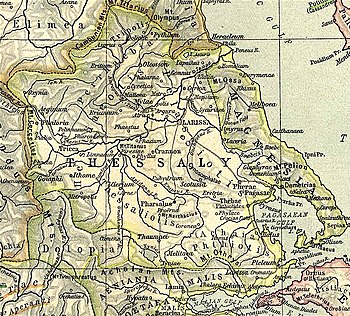|
Ithome (Thessaly)39°24′57″N 21°47′56″E / 39.41583°N 21.79889°E  Ithome (Ancient Greek: Ἰθώμη) was a town of Histiaeotis in ancient Thessaly, described by Homer as the "rocky Ithome",[1] is placed by Strabo within a quadrangle formed by the four cities, Tricca, Metropolis, Pelinnaeum, and Gomphi.[2] It occupied the site of the castle which stands on the summit above the modern village of Fanari (in the modern municipality of Ithomi, which reflects the ancient name).[3][4] Visiting the place in the nineteenth century, William Martin Leake observed, near the north-western face of the castle, some remains of a very ancient Hellenic wall, consisting of a few large masses of stone, roughly hewn on the outside, but accurately joined to one another without cement.[5] The town's original name was Thome (Θώμη).[6] Other names borne by the town were Thoumaion (Θούμαιον),[4] Thamai (Θαμαι),[4] and Thamiai (Θαμιαι).[3] References
|